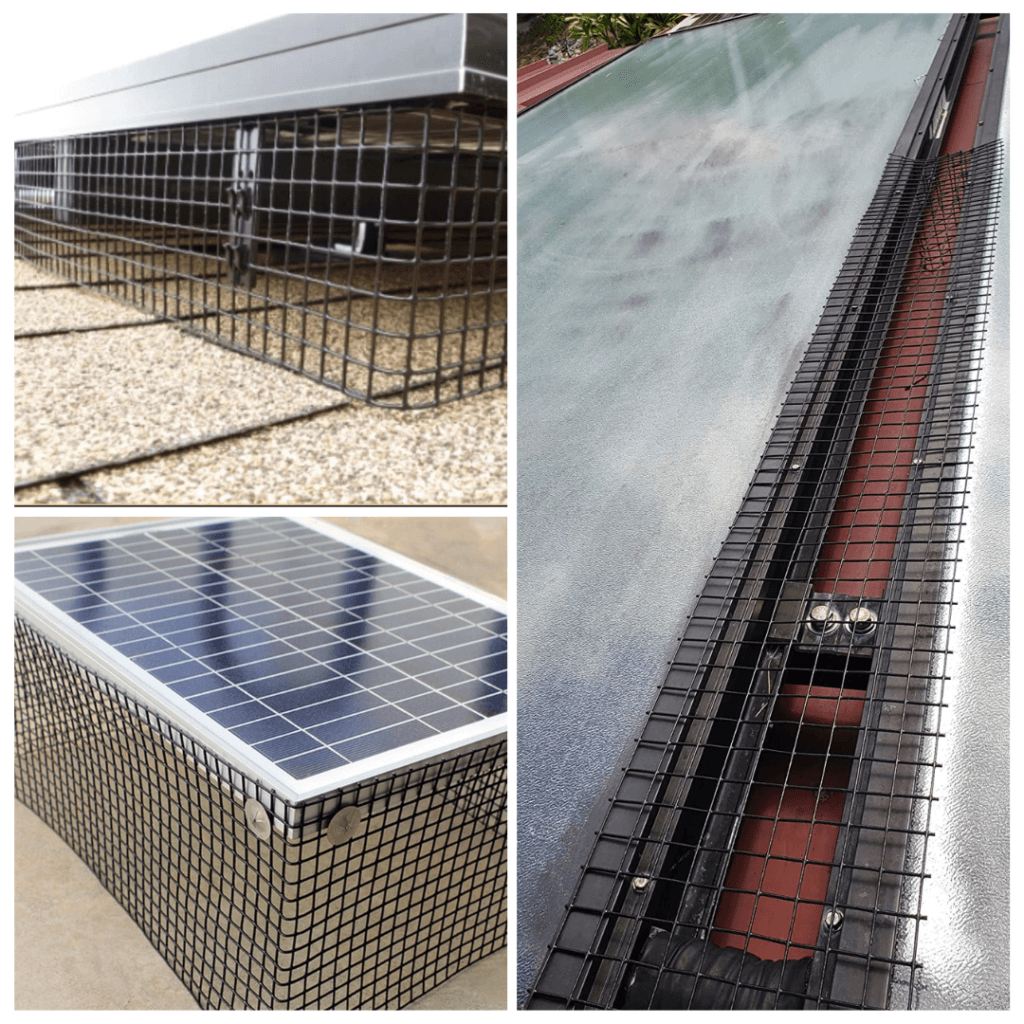
Table of Contents
Maximizing Solar Panel Lifespan in 2023: A Comprehensive Guide to Critter Guards and Pest Protection
What Are Critter Guards and Why Are They Important?
Solar panels, though hailed for their environmental benefits, can inadvertently become attractive habitats for various critters. These uninvited guests aren't just a nuisance – they pose a real risk to solar panel efficiency and lifespan. The cozy nooks beneath panels and warm spaces make them appealing to birds for nesting, while rodents seek shelter. Even smaller pests like squirrels and insects can wreak havoc by gnawing on wires.
That's why critter guards play a crucial role in safeguarding your solar investment. Solar critter guards act as a barrier, blocking the gap between the panels and your roof. This not only keeps pigeons, rodents, and other critters at bay but also ensures proper ventilation, allowing your solar panels to operate without any hindrance. Moreover, these guards, typically made from long strips of light metal material like chicken wire, are discreetly fastened between the roof and panels or installed around ground-mounted systems.
In addition to critter deterrence, these guards prevent leaves from accumulating beneath the panels, addressing potential fire hazards caused by dry vegetation. Trapped moisture from leaves after heavy rain or snow can also lead to weak spots on your roof. This is particularly important because, depending on your roof material, leaf buildup can result in roof rot.
Importantly, solar panel critter guards are not only functional but also aesthetically pleasing. When professionally installed, they are virtually invisible from the ground, seamlessly blending with your solar setup. It's worth noting that homeowners' insurance typically doesn't cover damage caused by pests to solar panels. However, professionally installed critter guards won't void your solar panel warranty. They offer quick and easy installation, providing lasting protection to ensure your solar panels operate efficiently for years to come.
Where Can You Purchase Critter Guards for Solar Panels?

Your solar provider can assist you with the installation of critter guards, or if your panels are already in place, various options are available online, including those on Amazon that allow for self-installation.
The price of critter guards varies depending on the type you opt for. A custom installation can range from $500 to $2,000, while options from Amazon start as low as $40 for a 50-foot netting.
One available choice is the Maporch solar panel bird wire, currently priced at $39.99. Crafted from PVC-coated galvanized steel mesh, this bird wire stands 6 inches tall and spans 50 feet. Ensure to measure the length of your solar panel array to determine whether additional wires are needed for comprehensive coverage.
The Solar Trim by Nixalite provides an alternative that allows for self-purchase and installation using peel-and-stick technology. Various choices are available, starting from dimensions of 6.75 inches x 48 inches and extending up to lengths of 100 feet.
Installation of this product requires a DIY approach with fasteners, offering a cost-effective option but potentially leading to a less secure or improper setup.
For those seeking specialized critter guard solutions, companies dedicated to critter guard installations can provide a free quote, offering a more accurate estimate for both the guard's cost and the installation expenses across your entire system. Alternatively, if you are having solar panels installed, your solar provider can seamlessly incorporate critter guards into the overall installation process.
What Are the Potential Consequences If You Don't Install Critter Guards?
One of the inconveniences associated with a critter guard-free solar panel system is the likelihood of birds creating nests beneath the panels. This situation may necessitate the expense of removing the birds and subsequently installing a critter guard.
Alternatively, if an animal were to chew through your wires, it could render your entire system inoperable for several days until repairs are carried out.
The most perilous scenario, though rare, involves the accumulation of dry vegetation beneath the panels, which could ignite due to faulty wiring. Electrical fires are typically caused by faulty or damaged wiring, and the presence of dry leaves beneath your panels could exacerbate this risk. While this occurrence is infrequent, the installation of critter guards can provide added peace of mind.
While not mandatory, solar panel critter guards offer several benefits, and many installations choose to forgo them. However, if your locality has a significant wildlife presence, such as squirrels or nesting birds, incorporating critter guards into your solar array may be a prudent decision.
It's crucial to note that homeowners' insurance generally excludes coverage for damage caused by pests to your solar panels. While seeking recourse through the warranty from your solar panel installer or manufacturer is an option, warranty terms vary, and you may find yourself responsible for repair costs in certain cases.
Should “Critter” Concerns Stop You From Going Solar?
For most homeowners, going solar means mounting an array of solar panels on your roof. As with any home improvement project that involves the roof over your family’s head, this sometimes makes homeowners anxious. One topic that our energy consultants are asked about a lot involves solar and pests: the concern that rooftop solar panels will become a magnet for nesting animals who might become an annoyance or even damage the panels or the home’s roof.
As with most maintenance-related concerns, our experience from thousands of solar installs shows that rooftop pests are usually far less of a problem than homeowners fear. Still, it’s a natural question for homeowners who are just starting to research solar to ask – especially when some solar installer companies exaggerate the issue in order to sell add-on features.
The risk of animals causing damage to the panels themselves is minimal. People sometimes assume that solar panels are fragile because they look so much like ordinary panes of glass, but modern solar panels are highly durable, engineered to stand up to the weather for a warrantied lifespan of over 20 years.
Homeowners might also worry about small animals nesting underneath the panels in the space between the panels and the roof itself. Some solar installers make a point of raising this fear during their consultations with potential customers, and then offer the homeowner “critter guards” designed to stop pests from getting underneath the panel.
Our experience is that these are typically not needed – solar panels are designed to attract and capture the maximum possible amount of sunlight, so the area under panels can get very hot. This does not make for a hospitable environment for critters in most regions of the country, so they tend to stay away on their own accord.
But for those homeowners who do want the additional peace of mind, we’re happy to include critter guards as an optional add-on, but our energy consultants will never exaggerate unfounded concerns to “upsell” a homeowner on something they don’t need.
If you’d like to discuss this topic or any other questions you have about solar, use this link to schedule a convenient, no-pressure conversation with one of our energy consultants today– and be sure to follow us on social media so you don’t miss any of our solar education blog posts.















